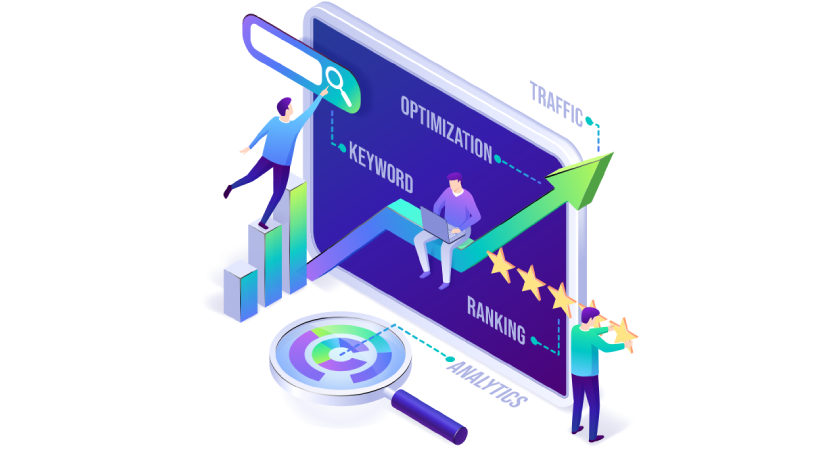Or, maybe both!?!
There is no disputing the fact that an ecommerce company’s visibility on the Internet is essential to their commercial success.
One highly effective way to generate qualified traffic is to show up on the first page of Google for keywords your target customers are searching for.
92% of users don’t look past the 1st page of Google results.
Suffice it to say that sites not present on the 1st page (for a given keyword phrase) do not benefit from this visibility. In addition, the click-through rate for each result decreases as you go further down the page.
To ensure your visibility on the 1st page of Google results, there are 2 distinct levers:
- SEO (Search Engine Optimization) – Organic (free) search traffic
- SEM (Search Engine Marketing) – Paid search traffic
What are the big differences between SEM and SEO?
SEM and SEO have a common goal: to drive targeted traffic to a website. But the question remains, when it comes to ecommerce SEO vs SEM, which one wins?
However, the practices are very different.
SEM
+ Quick to set up: Immediate visibility
+ Flexible: You can define timing and budget
+ Wide coverage of themes and keywords you want to show up for
+ Several possible display locations (Shopping, Search, Additional extensions, etc.)
– Limited audience (some users never click on ads)
– Limited (by budget) in the number of impressions (how many times your ad will show up)
– May not be suitable for all price points (lower priced items may not warrant the expense of paid traffic)
– Complex to manage by yourself over time and optimize via the Google Ads platform
SEO:
+ Higher potential traffic volume
+ Often more qualified traffic
+ Long-lasting presence on the internet
+ Build authority for your company
+ The only cost is your effort to create content
– Can take time for pages to rank organically
– Requires time and an effective strategy to get results
– Requires a longer term strategy
Why do some companies choose one lever over another?
As we have seen, SEO requires being patient to see the increase in traffic, especially on relevant and competitive keywords (we often see at least 6 months before the 1st significant increases in traffic). It is also necessary to have in-depth knowledge, the time available to be effective, to have a real vision of your long-term activity, and to think about your own website quality and usability.
If you have neither expertise nor time, you will have to call on a specialized SEO / SEM agency , therefore devote a budget line dedicated to SEO.
The rotation of Marketing teams in a company hinders the implementation of a sustainable strategy.
All these brakes favor the use of the SEM lever for companies because:
- The results are immediate.
- They can also regulate their presence and their budget at any time.
Other companies do not use SEM because they believe that:
- CPC’s on their keywords are too strong, making it difficult to be profitable,
- Competition in SEM is too strong,
- Or out of personal conviction, because they never click on ads.
Do we really have to choose between the two?
Starting from the observation that the development of your activity is linked to your presence on Google, do not choose between the two, and optimize your chances of converting!
SEO or SEM, the end goal remains the same: generate sales or qualified leads after a user request on Google.
If SEM is an important lever for your business, SEO should be just as interesting, even more profitable in the long term by projecting a minimum in time on your activity.
The 5 big benefits of a combined SEM + SEO presence:
- Increase your share of voice: the places available on the 1st page of Google (paid and natural) are limited, if your site is present twice on the results page, you double your chances of acquisition
- Eliminate your competitors: by definition, you exclude a competitor from this visibility
- Reach 100% of your audience: some users never click on the ads, or conversely, some users (45.5% of Internet users) do not see the difference between natural link and advertising ad and click on the ads first premium Google Ads at the top of the page. Some so-called “long tail” queries in the form of questions display inconclusive click-through rates.
- Take care of your brand image: positions on Google (a Google Ads ad + a natural link) give your audience an indication of your positioning and your digital maturity.
- Your Acquisition Strategy is not entirely dependent on a means of payment, and allows you to lower the media budget.
To sum it all up, ecommerce sites don’t have to choose between SEO and SEM, but should instead take advantage of both with a complementary acquisition strategy.
Credits:
Business vector created by stories – www.freepik.com


